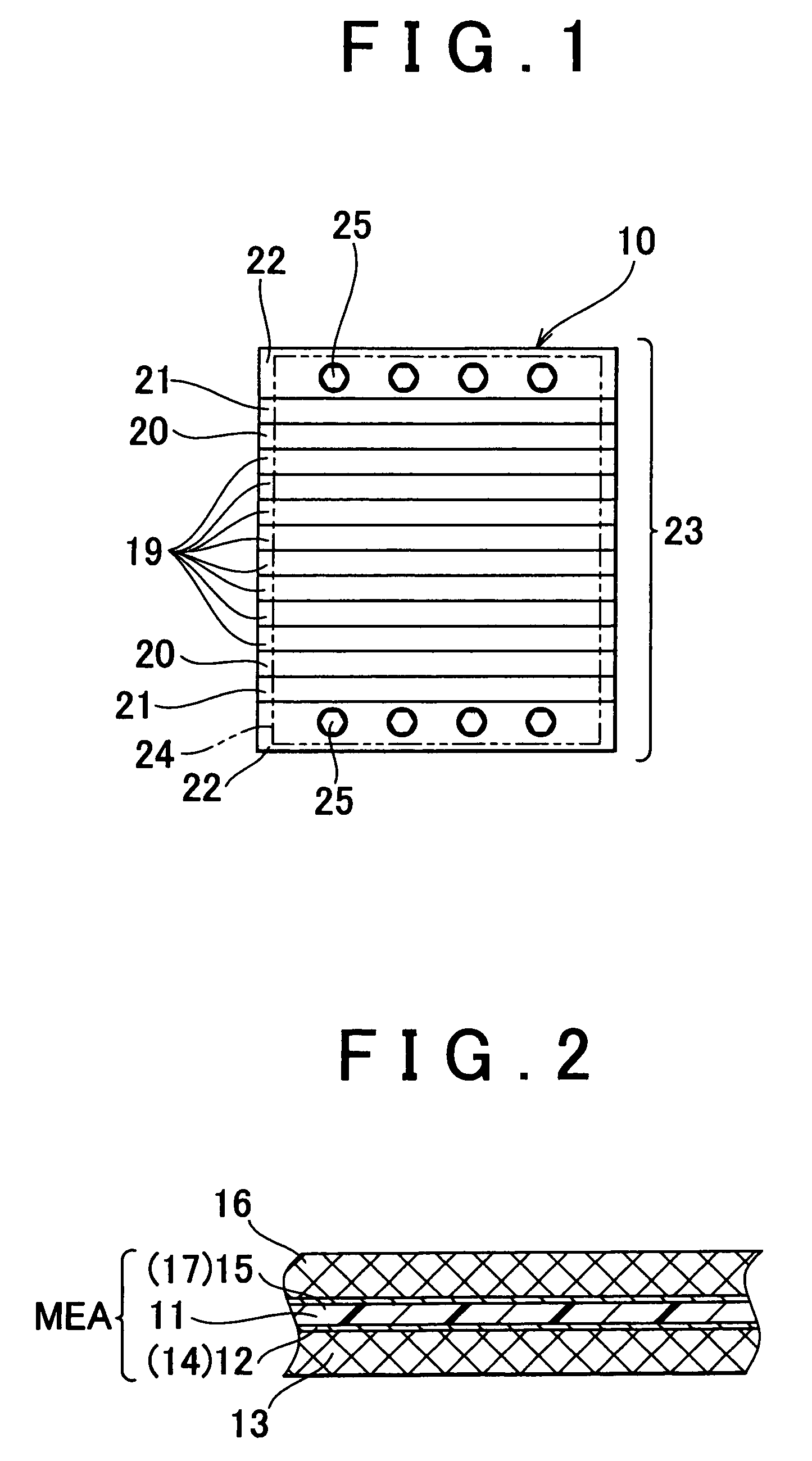Separator passage structure of fuel cell
a fuel cell and separation passage technology, applied in the field of separation passage structure of protonexchange membrane fuel cells, can solve the problems of increasing gas passages, clogging, and unable to maintain the homogeneity of the reaction in the entire cell, and achieve the effect of changing the cross sectional area and changing the gas passage cross sectional area
- Summary
- Abstract
- Description
- Claims
- Application Information
AI Technical Summary
Benefits of technology
Problems solved by technology
Method used
Image
Examples
Embodiment Construction
[0030]Hereafter, a separator passage structure of a fuel cell according to the invention will be described with reference to FIG. 1 to FIG. 10. The separator passage structure of a fuel cell according to the invention is applied a proton-exchange membrane fuel cell 10. The fuel cell 10 is mounted, for example, on a fuel cell vehicle. However, the fuel cell 10 may be used for systems other than an automobile.
[0031]A unit cell 19 of the proton-exchange membrane fuel cell is formed by stacking a membrane-electrode assembly (i.e., MEA) and a separator 18, as shown in FIG. 1 to FIG. 10. As shown in FIG. 2, the MEA includes an electrolyte membrane 11 formed of an ion-exchange membrane, an electrode 14 (anode, fuel electrode) formed of a catalytic layer 12 provided on one surface of the electrolyte membrane 11, and an electrode 17 (cathode, air electrode) formed of a catalytic layer 15 provided on the other surface of the electrolyte membrane 11. A diffusion layer 13 is provided between th...
PUM
 Login to View More
Login to View More Abstract
Description
Claims
Application Information
 Login to View More
Login to View More - R&D
- Intellectual Property
- Life Sciences
- Materials
- Tech Scout
- Unparalleled Data Quality
- Higher Quality Content
- 60% Fewer Hallucinations
Browse by: Latest US Patents, China's latest patents, Technical Efficacy Thesaurus, Application Domain, Technology Topic, Popular Technical Reports.
© 2025 PatSnap. All rights reserved.Legal|Privacy policy|Modern Slavery Act Transparency Statement|Sitemap|About US| Contact US: help@patsnap.com



